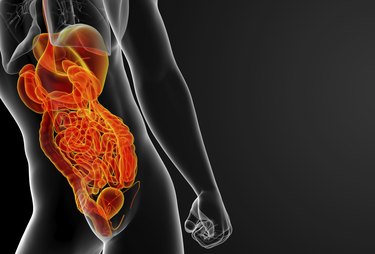
The process by which dietary calories are absorbed is called metabolism. Metabolism starts with digestion. Digestion begins in the mouth where food is combined with saliva during chewing and carbohydrates begin to break down into simple sugars.
Digestion
Video of the Day
The process is continued in the stomach where foods are combined with stomach acid to further break it down. Proteins are broken down here. Then food travels to the small intestine where enzymes break the food down even more, according to the Western Kentucky University Biology Department. Carbohydrates, fats and proteins are broken down into glucose, fatty acids and amino acids.
Video of the Day
Absorption
Glucose and amino acids are absorbed through the small intestine walls into the bloodstream. Fatty acids are absorbed into the lymphatic system from the small intestine and eventually reach the bloodstream near the heart.
Storage
Some calories are used immediately in the form of glucose. Calories that exceed the immediate needs are transformed into glycogen by the liver and stored in the liver and muscles for later use. Excess calories are also stored in the form of fatty acids in your fat cells.
Is this an emergency? If you are experiencing serious medical symptoms, please see the National Library of Medicine’s list of signs you need emergency medical attention or call 911.